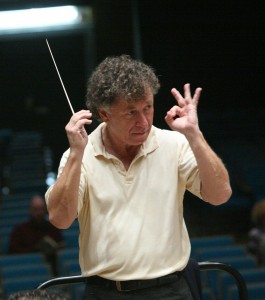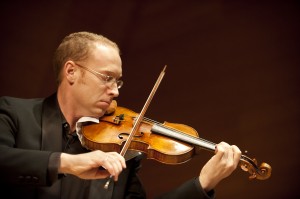Late for OctoberFest, but Solid German Music at the Symphony
San Diegans with a good memory may recall that Christof Perick auditioned for the post of San Diego Symphony Music Director in 1989. It was his good fortune not to sign with the bankruptcy prone local orchestra, and he continued on to seek his musical fortune in his native Germany, although in the early 1990s he had several seasons leading the Los Angeles Chamber Orchestra.
He returned to Copley Symphony Hall Friday (Nov. 16) to conduct the San Diego Symphony in a thoroughly German program built around Beethoven”s Sixth Symphony (“Pastoral”). He opened with Richard Strauss’ evergreen tone poem “Don Juan,” which he took at a breathless clip to estimable effect.
The players matched his exuberance, offering some of their most cohesive, robust playing of the season. Strauss always wrote demanding parts for the horns—his father was Germany’s premier orchestral horn player of his day—and the symphony’s horn section delivered consistently unified, muscular lines that were not at all short of sonic allure. Principal Oboe Sara Skuster’s several solos proved aptly ardent and lofty, depending on the context.
On the podium, Perick is an athletic, aerobic conductor, and serene is not part of his physical vocabulary. But as fussy as his direction may be, it would be hard to argue in the face of such compelling musical results in “Don Juan.”
It is no mystery why Karl Goldmark’s Violin Concerto in A Minor, Op. 28, is rarely programmed. Although it boasts several hummable tunes, it is structurally simplistic, and, for all the complex figuration Goldmark throws at the solo violin, it doesn’t go anywhere. The first ponderous first movement sounds like a couple of well-crafted themes ineptly interspersed with tortuous violin etudes.
Concertmaster Jeff Thayer was up to the challenge of negotiating these technical feats, but he did not make me want to hear
them again—ever. He was at his best in the quiet middle movement, an extended serenade for the violin, accompanied by the hushed murmer of the orchestra’s string section. In the finale, Thayer experienced a momentary lapse of focus, but he quickly recovered.
The audience gave him a rousing reception, but I question the value of dragging out a third-rate Romantic violin concerto in a season that features most of the big, warhorse 19th-century violin concertos. Would not everyone be better served by including works from the first rank of 20th-century violin concertos? We are well into the 21st century, and this repertory from the last century is still seriously under represented on our concert stages.
Perick conducted the Beethoven Sixth Symphony from memory, as he did the Strauss tone poem, with scrupulous attention to detail. He was particularly attentive to the thematic quirks and surprises of [php snippet=1]the opening movements, keeping alive the composer’s mood of expectation. I thought the middle movement was Perick’s strongest, celebrating its underpinning robust dance rhythms without shortchanging the ebullient themes touted by the wind soloists.
This Sixth Symphony offered no new revelations, but it was a welcome visit to a corner of the Beethoven symphonic canon that our orchestra has not recently visited.
[box] San Diego Symphony at Copley Symphony Hall, 750 “B” Street, San Diego 92101
Nov. 16 & 17 at 8:00 p.m. and Nov. 18 at 2:00 p.m.
Tickets $20-95/ 619.235.0804/ www.sandiegosymphony.com
Next concerts: Composer John Williams conducts the orchestra on Dec. 7 & 8, 2012[/box]

Ken Herman, a classically trained pianist and organist, has covered music for the San Diego Union, the Los Angeles Times’ San Diego Edition, and for sandiego.com. He has won numerous awards, including first place for Live Performance and Opera Reviews in the 2017, the 2018, and the 2019 Excellence in Journalism Awards competition held by the San Diego Press Club. A Chicago native, he came to San Diego to pursue a graduate degree and stayed.Read more…


